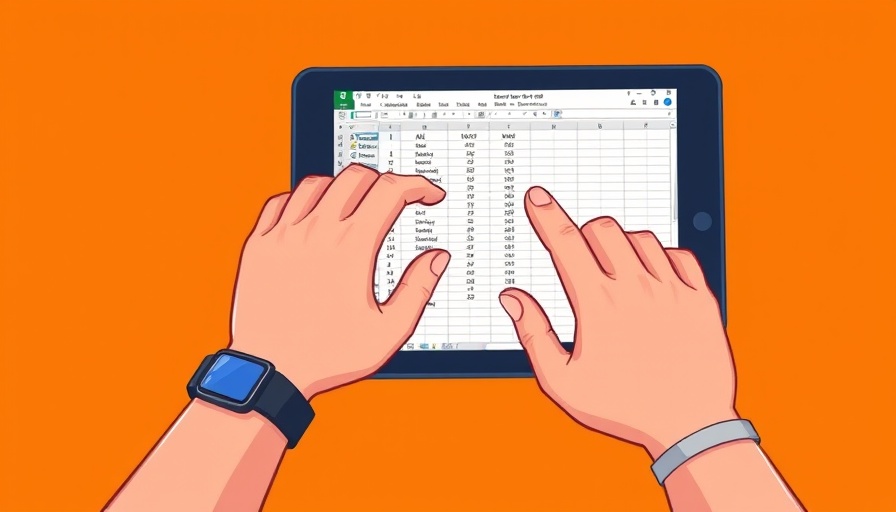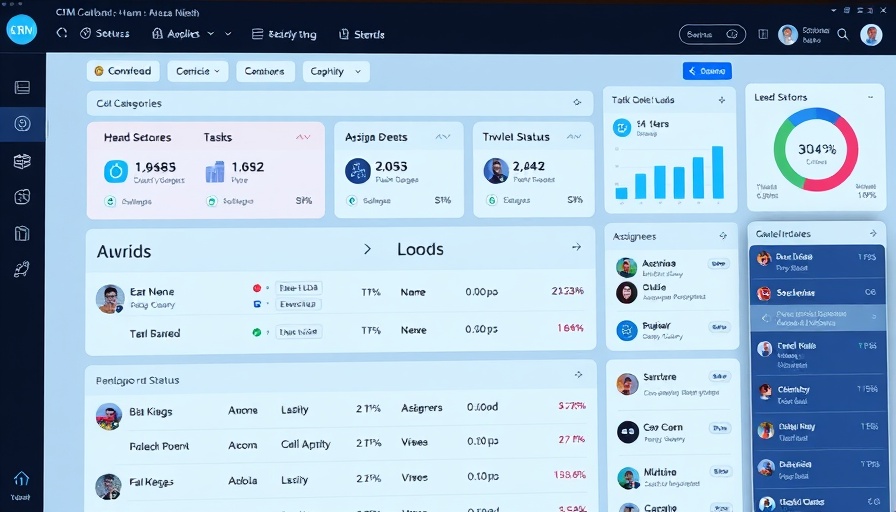
Mastering Job Applications with a Simple Excel Tracker
For business owners poised for growth, the intricacies of scaling operations often leave little room for oversight, particularly when it comes to hiring. If you're generating between $2M and $10M in revenue and actively seeking talent, an Excel job application tracker can streamline your hiring process, making it easier to visualize candidate pools and manage your selections effectively.
Why Use an Excel Job Application Tracker?
Utilizing a job application tracker isn’t just about managing spreadsheets; it’s about creating a structured pathway that encourages clarity amidst the chaos. Depending on the sophistication of your hiring needs, an Excel tracker can help simplify complex decisions. Imagine having a clear visual layout of each candidate's status—who's applied, who's moved into interviews, and where the bottlenecks are located.
Setting Up Your Excel Tracker: Step-by-Step
Here’s a streamlined process to get your job application tracker up and running:
- Create a spreadsheet: Start a new workbook in Excel and create columns for key candidate details. Essential columns would include Name, Contact Information, Position Applied For, Application Date, Status, and Notes.
- Define status categories: Clearly outline the stages of your recruitment process. Typical statuses might include 'Application Received', 'Under Review', 'Interview Scheduled', and 'Offer Extended'. This will help keep everyone on the same page.
- Utilize conditional formatting: To quickly spot which candidates are in which stage, use conditional formatting to color-code cells based on status—red for 'Rejected', green for 'Hired', etc.
- Collaborate with your team: Share the document with your team members, allowing for streamlined collaboration. Excel’s sharing capabilities mean everyone can update the information in real-time, enhancing communication and reducing miscommunication.
- Track progress effectively: Regularly update the tracker to reflect the current status of each candidate, allowing you to assess how your recruitment process is flowing. If certain stages consistently see delays, this could be an indication that a process needs to be improved.
A Closer Look at Benefits
Beyond mere tracking, there are strategic advantages to having an Excel job application tracker:
- Increased Efficiency: By having all candidates' details organized in one place, you eliminate the time wasted switching between emails and platforms.
- Enhanced Decision-Making: Insights gained from tracking data patterns can empower informed hiring decisions. For example, monitoring how many candidates make it to interviews versus those who apply can highlight potential weaknesses in the job description or company appeal.
- Improved Processes: Regularly evaluating your hiring process through this tracker allows you to refine your workflows, ensuring that your operational infrastructure is resilient and productive.
Next Steps: Implementing the Tracker
Consider integrating this Excel tracker with other project management tools that align with your operations. By doing so, you can enhance the collaboration and streamline the workflows across your business. Automations or dashboards connected to your tracker can bring a whole new level of insight, allowing you to focus on strategic aspects of growth rather than getting bogged down in administrative tasks.
Actionable Insights for Your Hiring Strategy
As you go about implementing your Excel job application tracker, remember to continually assess its effectiveness. Is it helping you meet your hiring goals? Are there aspects of your hiring process that still feel chaotic? Utilize feedback from your team and data from the tracker to evolve the process.
The key takeaway is to leverage this tool not just as a means of tracking applicants, but as a vital part of optimizing your hiring strategy. Your business’s success is contingent upon the talent you bring on board, and an efficient hiring process is essential for attracting the right candidates.
By incorporating an Excel job application tracker into your operations now, you’re taking a proactive step towards scaling your team effectively and sustainably.
 Add Row
Add Row  Add
Add 



Write A Comment